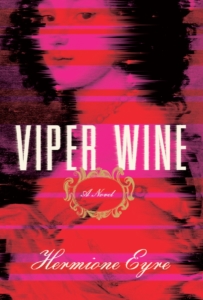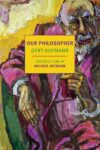 [Crown; 2015]
[Crown; 2015]
Viper Wine swirls in a mesmerizing dance between historical fact and fiction set in the court of Charles I. Hermione Eyre’s first novel examines the passions of Lord and Lady Digby, a Catholic couple who lived in the increasingly puritanical England of the early 1630s, and the quest of unlettered Mary Tree to find Digby and have him heal her wounded kinsman with his famed Powder of Sympathie. The characters are not immediately likable or even understandable; like most people, getting to know them takes patience. Even after 400 pages, much remains inscrutable. Viper Wine does not trap itself in the provable details of its historic figures, but instead dwells in the motivations and anxieties coursing beneath the public narrative.
More akin to the historical fiction style of Umberto Eco than that of Georgette Heyer, Viper Wine sometimes loses its forward momentum for the sake of philosophical musings and well-researched details. Yet these slow passages prove intriguing rather than dull, especially upon realizing that the most bizarre details (involving a 1624 proto-submarine, for example) stem from Eyre’s assiduous research. Time does not function linearly in Eyre’s novel, as when one character looks for his phone before finding his quill or when another “reach[es] for the word pixelated — but it was three hundred years away.” The setting holds all events at that spot across time, creating a haunting confusion of connections. Eyre pokes at the façade of historical fiction, showing how readers imbue it with their present concerns and fantasies.
The bulk of the novel revolves around Lady Digby’s battle to retain her famed beauty. Only in her early thirties, Venetia lives in constant terror of losing the perfection described in Ben Jonson’s poetry and Van Dyke’s artistry. Her beloved veneration silently oppresses her. In her efforts to find a potion to clutch onto her youthful face, she loses herself. The beautician’s potent, opium-laced viper wine works like botox, rapidly turning the 1630s English court into a puffed-up, stiffened, and painted version of its former self.
In one striking scene, Digby cannot recognize his beloved wife’s face among all the painted women of court, as each one of them has traded their individuality for a mask of idealized beauty. Beauty is not just the pain of a acid-smoothed face, it is also that of refusing a child entrance for a morning kiss in fear that he would cry to see his mother’s naked face. Viper Wine provides a searing critique of manufactured beauty, without blaming those it consumes or becoming a saccharine teachable tale. Instead, the novel chronicles the addictive power of beauty treatments driven by culturally-encouraged body dysmorphia. The mingled quotes of more recent beauty icons remind the reader that these are not just problems of the misguided past to shake our heads at; they permeate our current culture.
Throughout the novel, Eyre incorporates quotations from the writings of her main characters and their contemporaries. Very occasionally, these inclusions feel like a regurgitation of a beloved text; most of the time, however, they create a daring medley of voices that shifts intriguingly in style and focus throughout the novel. She also delightfully incorporates temporally distant but ideologically suited voices, such as a 2013 beauty elixir’s magic-claiming advertisement or Donald Trump’s assertion that his hair is not a rug. Particularly in her metaphors, Eyre brings these many voices and times together, such that the Venetia of 1633 is also the “siren of the silver screen, whose every film is lost.” Viper Wine whispers beyond its pages, reappearing in glossy advertisements of Elle and in strange-tasting rouged lips.
But beauty is not the only allure. Digby succumbs as much to his books and alchemical recipes as Venetia does to her elixirs. While she constructs her face, he builds a library with more books than could be read in several lifetimes. The obsessions of husband and wife are insatiable; it is never enough. Eventually, Digby falls into a desperate alchemical frenzy, stinking up his living quarters with unsuccessful efforts to reanimate calcified crayfish. Yet, in Eyre’s fluid depiction of time, Digby’s hopeful lecture on immortality is haunted by future texts such as Frankenstein and stem-cell research publications. What would it mean for Digby, or some future instantiation of Digby, to succeed?
How are we to imagine what could be without becoming lost in an inaccessible reality? Eyre’s clever, elegant writing raises many such questions, letting them hover before us until they blow away or pop. Yet, the rainbow swirls of these ungraspable bubbles inspire such wonder. I’m drawn to flip my book over and read it again, looking to see what other reflections shimmer in Eyre’s translucent words.
This post may contain affiliate links.







